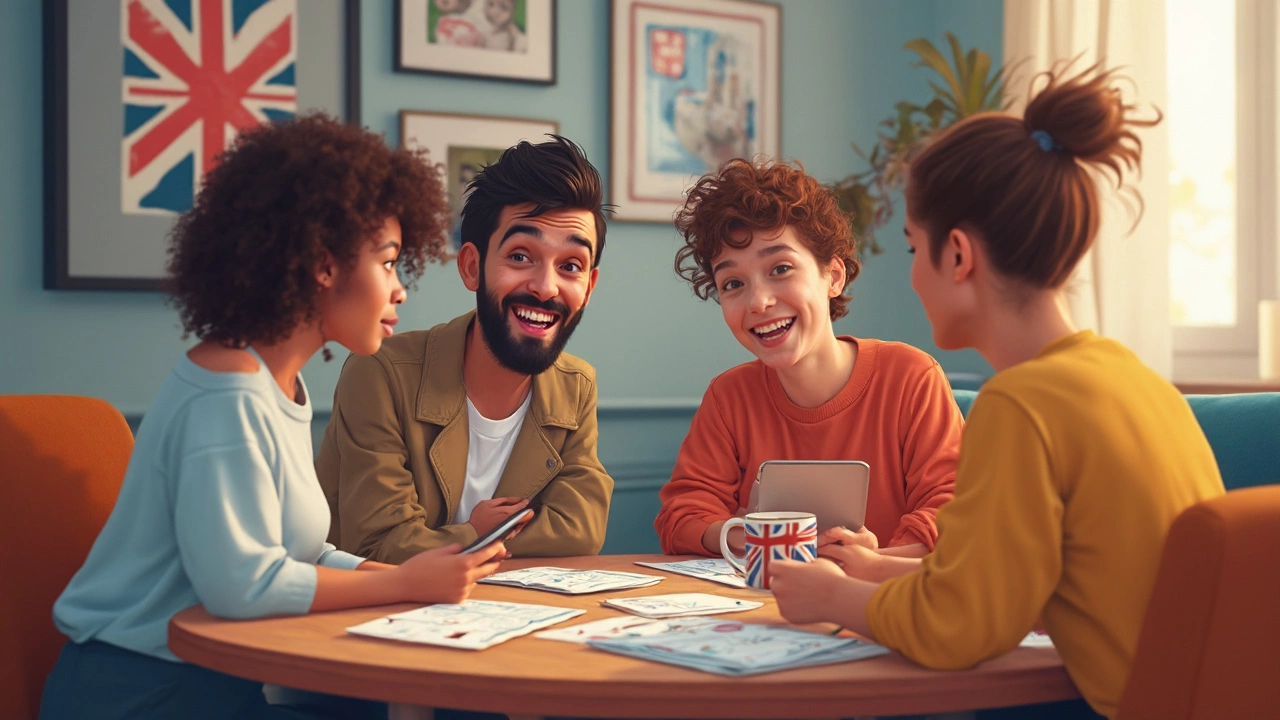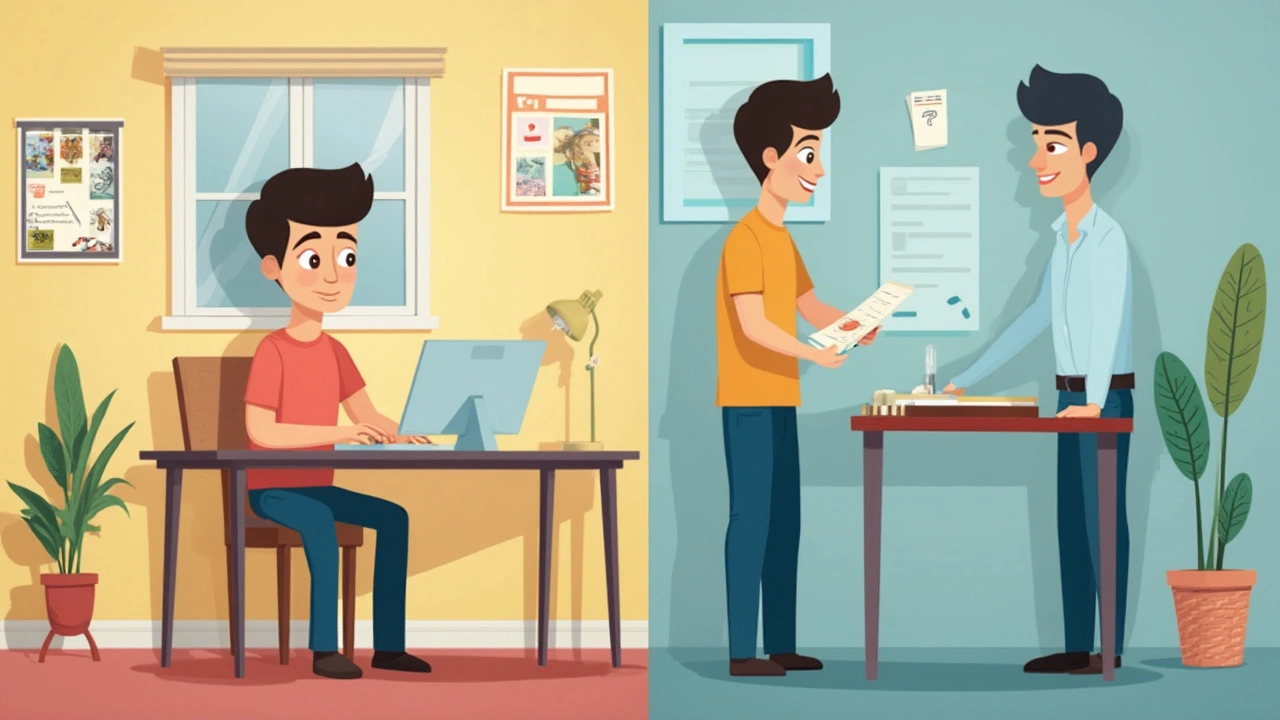The idea of taking your driving theory test in your pajamas sounds pretty tempting, right? You’ve probably wondered if you can just log in from your sofa, skip the nerves of a test center, and knock out the whole thing online. Here’s the straight answer: in the UK, you can’t take your official car or motorcycle theory test at home—at least, not yet. All theory tests for a full driving licence must be done at an approved test centre, no matter how comfortable your armchair is.
Loads of online practice tools promise that magic “real test feel” at home, but don’t get your hopes up—these are just practice runs. The actual theory test is supervised at a real centre, with stuff like ID checks and CCTV to stop cheating. Still, prepping at home with online mock exams and apps can seriously boost your score on test day. If you want the test to count towards your licence, though, you’ll have to go in person.
- Is Taking the Theory Test at Home Allowed?
- Alternatives to Home Theory Tests
- How to Book and Prepare for the Test
- Top Tips for Theory Test Success
- Common Mistakes and Smart Fixes
Is Taking the Theory Test at Home Allowed?
If you’re itching to tick off the theory test from your to-do list without leaving the house, there’s a catch: you just can’t. Right now, in the UK, the law says you must sit the car or motorcycle theory test inside an official test centre. It’s the same for everyone, whether you’re a first-timer or you’ve failed a couple times before.
The test centres are run by the Driver & Vehicle Standards Agency (DVSA). They use loads of security checks. You have to show your ID, empty your pockets, and sit in front of surveillance cameras. These measures mean there’s no wiggle room for cheating—or even trying to take the test for someone else.
There was a bit of buzz during the covid lockdowns about possible online testing, and a few other countries started letting their learners do it over webcam. But in the UK, those changes never came in for car or motorcycle licences. The only exception is for the taxi theory test in some local areas, and those rules are totally separate.
You might see scam websites or weird ads offering a “real” at-home theory test. Ignore them—none of those will count, and you’ll risk losing your money or personal details.
If you’ve got special needs or can’t physically get to a centre, the DVSA does offer help like extra time, a reader, or a separate room—but remote testing from home isn’t an option, even then. For now, you’ll still need to book a spot, turn up at a nearby centre, and take the official test in person.
Alternatives to Home Theory Tests
Since you can’t actually take your official theory test at home in the UK, what are your real options? Right now, the system is pretty clear: you’ll have to go to an approved test centre. These places are set up with secure computers, ID checks, and strict rules to keep things fair for everyone. There’s no remote testing because they need to be sure the person taking the test is really you and not your super-smart cousin doing you a favour.
What does exist is a wildcard for certain folks. If you have a disability or health condition that makes it impossible to reach a centre—let’s say you’re housebound—you can sometimes ask the DVSA (that’s the Driver and Vehicle Standards Agency) for a special arrangement. It’s rare and only happens when there’s pretty strong evidence. In these cases, the DVSA might set up a mobile testing service, where an examiner comes to you, or they’ll find another way to help. But for just wanting extra comfort or convenience? No dice.
The rest of us? Our best alternative is to smash through online mock tests and theory training apps at home. Most theory test centres run every day, and you can often pick a time that fits your work or college schedule—evenings and weekends are usually options in busy areas. If distance is a pain, you can choose from several centres, sometimes in your neighbouring town or city. It’s worth checking the DVSA website for the list of approved theory test centres and their locations so you can find the closest one.
- Practice using online mock theory tests – the official DVSA website and loads of apps give you hundreds of example questions.
- Book your slot early—some areas fill up quickly, especially around school holidays or just after exam results drop.
- If you struggle with reading or English, you can ask for extra support from the test centre, like more time or a voiceover.
In short, while you can’t take the real thing at home, there are plenty of ways to make the process less of a headache. Prep online, pick a centre that works for you, and explore extra help if you need it.

How to Book and Prepare for the Test
Booking your theory test is way less painful than you might think. Head straight to the official GOV.UK website—don’t get tricked by scam sites that charge silly admin fees. The only info you really need is your UK driving licence number, an email address, and a credit or debit card to pay the fee. For 2025, it’s £23 for the car theory test. If you're struggling to pick a date or need special support (like extra time or a reading aid), the booking site lets you add those requests.
Here’s how booking works, step by step:
- Jump online to book your test here.
- Type in your driving licence number and your details.
- Choose a nearby test centre that suits you.
- Pick a test date—slots are often booked weeks ahead, so move fast if you’re on a tight timeline.
- Pay the fee and check your email for confirmation. Mark that date in your calendar!
Now, prepping for the theory test isn’t just about reading a book once. The test covers 50 multiple-choice questions and the hazard perception video clips. You need to get 43/50 to pass the questions and 44/75 on hazard perception. Here’s a table giving you an idea of the numbers:
| Test Section | Questions/Clips | Pass Mark |
|---|---|---|
| Multiple Choice | 50 questions | 43 correct |
| Hazard Perception | 14 clips | 44 out of 75 |
Don’t just wing it—almost half of first-timers don’t pass. Use the official DVSA theory test kit app, which costs about £5. You can also find mock tests online for free. The Highway Code is your bible. Set up a study schedule and actually stick to it. Try to get in at least 15-20 minutes a day for two to three weeks. Apps with practice questions let you see where you’re weakest, so double up in those areas.
One more thing: test centres need your photocard driving licence on the day. No licence, no test. Double-check your test time and location the night before to avoid any last-minute panic. If you need to reschedule, you can do it online for free if you give at least three working days’ notice.
Top Tips for Theory Test Success
Getting your theory test right the first time saves money, stress, and a lot of back-and-forth. If you want to nail the theory test, a few smart moves make a massive difference.
- Don’t just skim the Highway Code: It’s not the most thrilling read, but questions come straight from it. Focus on bits that catch people out, like road signs and stopping distances. Print out tricky signs and stick them on the fridge—I’m not kidding, it works.
- Mock tests are non-negotiable: Use the free GOV.UK practice tests or reliable apps. Aim for at least five full mocks before your real date. If you’re scoring below 45/50, keep practicing. The real pass rate in 2024 was about 44%, so prep is everything.
- Hazard perception videos: This part trips up nearly everyone the first time. Watch official clips online and use all 20 practice videos from the DVSA site. The trick is to click early when you spot something dodgy, but don’t go on a clicking spree—you can fail for that.
- Make a study schedule: A little every day is easier to remember than a week-long cramming fest. Mix quick review sessions with longer practice tests. Even 15 minutes a day will add up fast.
- Test yourself out loud: Grab a family member or buddy, hand them a question sheet, and make them quiz you. Saying answers out loud helps make stuff stick (Miranda can confirm—she’s quizzed me in the kitchen more than once).
| Fact | Detail |
|---|---|
| Total Questions | 50 (multiple choice) |
| Required Pass Mark | 43 (86%) |
| Hazard Perception Clips | 14 |
| Pass Rate (2024) | 44% |
One more thing—know where your test centre is and show up with the right ID, like your provisional licence. Every month dozens are turned away for forgetting the basics. Stay calm, read every question twice, and flag any you want to check later. That’s how you walk out smiling.

Common Mistakes and Smart Fixes
Even the most careful people slip up on their theory test—trust me, it happens every day. Most of these mess-ups are totally avoidable once you know what trips people up.
For starters, way too many test-takers skip the official Highway Code. They scroll through apps or online quizzes but never actually open the real deal. The Highway Code is the backbone of the exam, and questions come straight from it. If you skip it, you're gambling with your score.
Another classic mistake? Rushing through mock tests without reviewing what you got wrong. Sure, it feels good to get a “pass” on a practice test, but mistakes are pure gold for learning. Always check the answers you missed and figure out why you missed them. If you keep slipping on road signs, focus some time just on those — it pays off.
Here's one that stings: forgetting ID or showing up late. You need your provisional licence for the real thing, and the test centers won’t let you in without it. I've seen people turned away for tiny paperwork slip-ups. Always double-check your documents and leave early, just in case.
Tech causes issues too. A lot of folks come into the centre not knowing how the test screen works. The official DVSA site has demo videos showing exactly what to expect, which saves a lot of stress on the day. Get familiar before you go.
No joke — nerves can also mess with your memory. Practice some deep breathing or easy focus tricks the morning of your test. Some people even bring a music playlist for the trip there to chill out. If you freeze up, remember you can flag tough questions and come back to them. Don’t burn precious time on one hard question while the clock ticks down.
- Read the Highway Code from start to finish, not just summaries.
- Take full-length practice tests and always review your mistakes.
- Pack your provisional licence and any other required documents the night before.
- Watch a theory test demo online to get comfy with the on-screen setup.
- Have a plan for nerves, like breathing techniques or a positive routine before you walk in.
Sort out these common mistakes, and you’ll be ahead of the pack. Small fixes can make a huge difference, especially when the test already feels stressful enough. You’ve got this!

